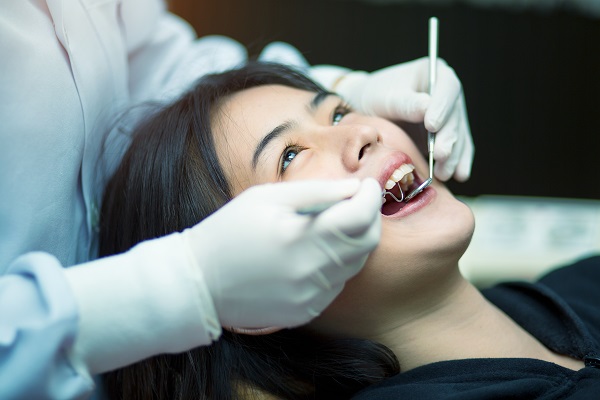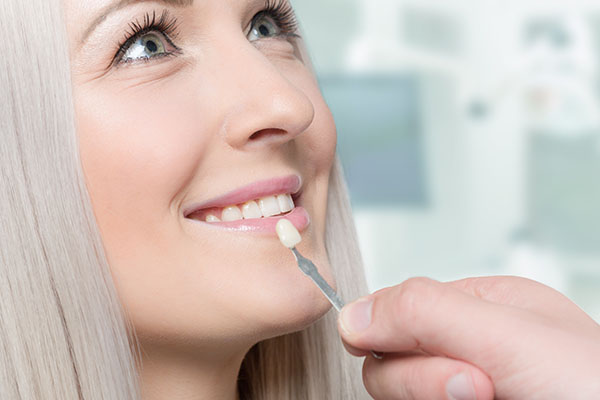Can Dental Bonding Fix a Chipped Tooth?

If you accidentally chip a tooth, dental bonding is one possible treatment option. Tooth enamel is a very hard substance, but it is still vulnerable to sudden force. You may chip a tooth if you trip and fall forward, hitting your mouth on the ground or another object. It can happen if you bite or chew on something that is not food, such as ice, bottle caps, or writing implements.
A chipped tooth usually is not serious, but it can affect your appearance and your confidence, as well as potentially contribute to future dental problems. Any break in a tooth's enamel can also make it more susceptible to decay, so repairs are often recommended. Bonding can restore your tooth's appearance, improve your bite, and help prevent more serious damage to your tooth later.
What is dental bonding?
Bonding consists of a composite resin made of ceramic particles mixed in a plastic called acrylic. A dentist can apply it to a tooth by painting it on, shaping it to the desired configuration, and then curing it with a blue light to harden it. The resin adheres to the tooth with the help of a bonding agent and can be sanded or polished as needed after it dries.
Good candidates for the procedure
Dental bonding is not appropriate to treat all types of damage to the teeth. If the damage weakens the tooth or affects its structural integrity, then bonding is not appropriate and another type of treatment is necessary. However, if the damage affects the appearance of the tooth but not its overall structure, bonding may be an appropriate treatment.
Caring for dental bonding
After a dental bonding procedure, you should continue to care for your teeth as you normally would, by brushing at least twice a day, as well as flossing. Avoid foods and drinks that can cause staining or discoloration, such as:
- Coffee
- Tea
- Red Wine
- Curry
- Beets
- Berries
- Soy sauce
- Balsamic vinegar
- Artificially colored beverages
If you do consume these, try to brush or rinse immediately afterward to reduce the risks of staining. Also, continue to see a dentist regularly for professional cleanings and checkups. The dentist can evaluate the state of the bonding to see if needs a minor touch-up.
Improving treatment longevity
Dental bonding is not a permanent solution and it will eventually require replacement. Many patients can expect to have it redone in as little as three years, while it can last up to a decade in others. Prolonging the life of dental bonding often comes down to dietary and lifestyle choices.
Eating hard or tough foods or chewing on ice and foreign objects will likely cause damage to the material. Clenching or grinding your teeth can also cause cracks or chips in the treatment. Avoid these practices to minimize damage. Excessive alcohol consumption or using an alcohol-based mouthwash can also weaken the bonding material over time.
What are the advantages of dental bonding?
In patients who are good candidates for it, dental bonding offers several significant benefits.
1. Minimally invasive
Other options require that some of the tooth's enamel be removed in preparation for the treatment. The changes to the prepared tooth are permanent because the enamel does not grow back. With dental bonding, the surface of the tooth has to be roughened first to create a surface that the resin can bond with more easily. Other than that, there is no need to remove any of the tooth's surface. Some patients do not even require numbing before the procedure takes place.
2. Fast
The procedure to have a single tooth bonded typically takes between 30 and 60 minutes. If you have more than one tooth that requires bonding, the procedure may take longer but can typically be done in a single visit.
3. Affordable
Compared to other treatment options, bonding often costs a lot less. However, it depends on factors such as how many teeth need bonding and how extensive the damage is. Keep in mind that, because bonding is often considered a cosmetic procedure, insurance may not cover it. Check with your insurer before committing to the procedure.
4. Natural-looking
Composite resin comes in many different shades to match the color of your natural teeth. The dentist uses a special guide to pick a color that matches closely.
Conclusion
You may be a candidate for dental bonding and the advantages it offers if you have a chip that affects your tooth's aesthetics but not its structure.
Request an appointment here: https://www.grayfamilydentalfl.com or call Gray Family Dental at (954) 840-1940 for an appointment in our Coral Springs office.
Check out what others are saying about our dental services on Yelp: Dental Bonding in Coral Springs, FL.
Recent Posts
An experienced cosmetic dentist can help with your dental gaps. This type of dental problem can cause more cavities. It can also lead to dental loosening and bite problems. Most people want to close these gaps so that they can have a more pleasant smile. Here are the details on how a cosmetic dentist can…
The primary goal of cosmetic dentistry is to restore the patient’s smile to a level that makes them feel confident. Tooth restoration is one of the most common cosmetic dentistry treatments, and there is a range of tooth restoration treatment options that are available for patients to choose from.The most popular methods of tooth restoration…
Fixing a broken tooth right away is important. This dental damage may seem like nothing more than a cosmetic problem, but it can lead to terrible consequences. Seeing a dentist sooner rather than later can provide immediate relief. If you want to find out the treatments for a broken tooth and its complications, here are…
A healthy, beautiful smile can make a difference in your life, and a smile makeover can help you achieve a smile to brag about. Smile makeovers fix damaged teeth, discoloration, tooth and gumline shape and size, gaps, and crowding, and even replace missing teeth. Renewing your smile and mending your teeth with cosmetic dentistry can…


